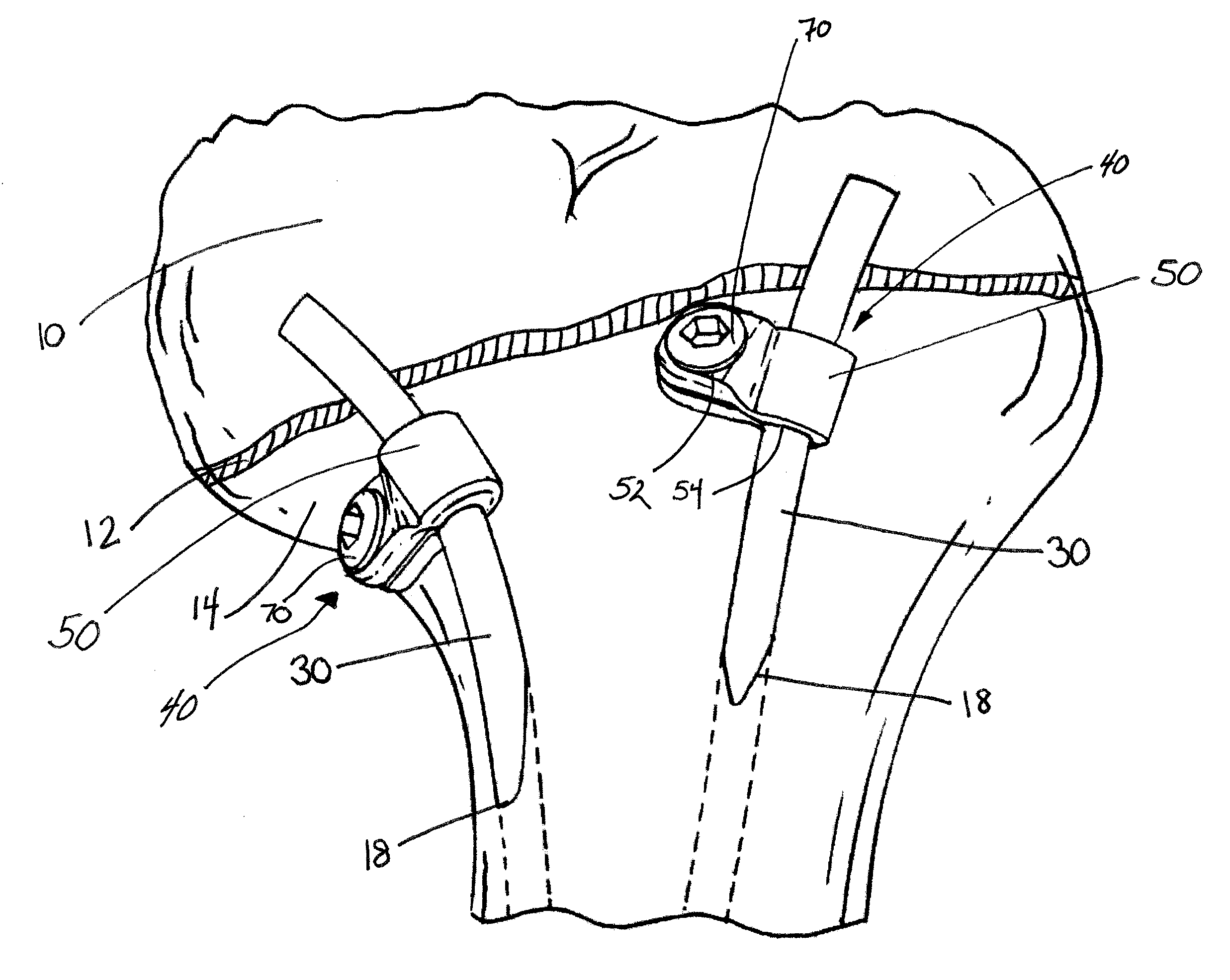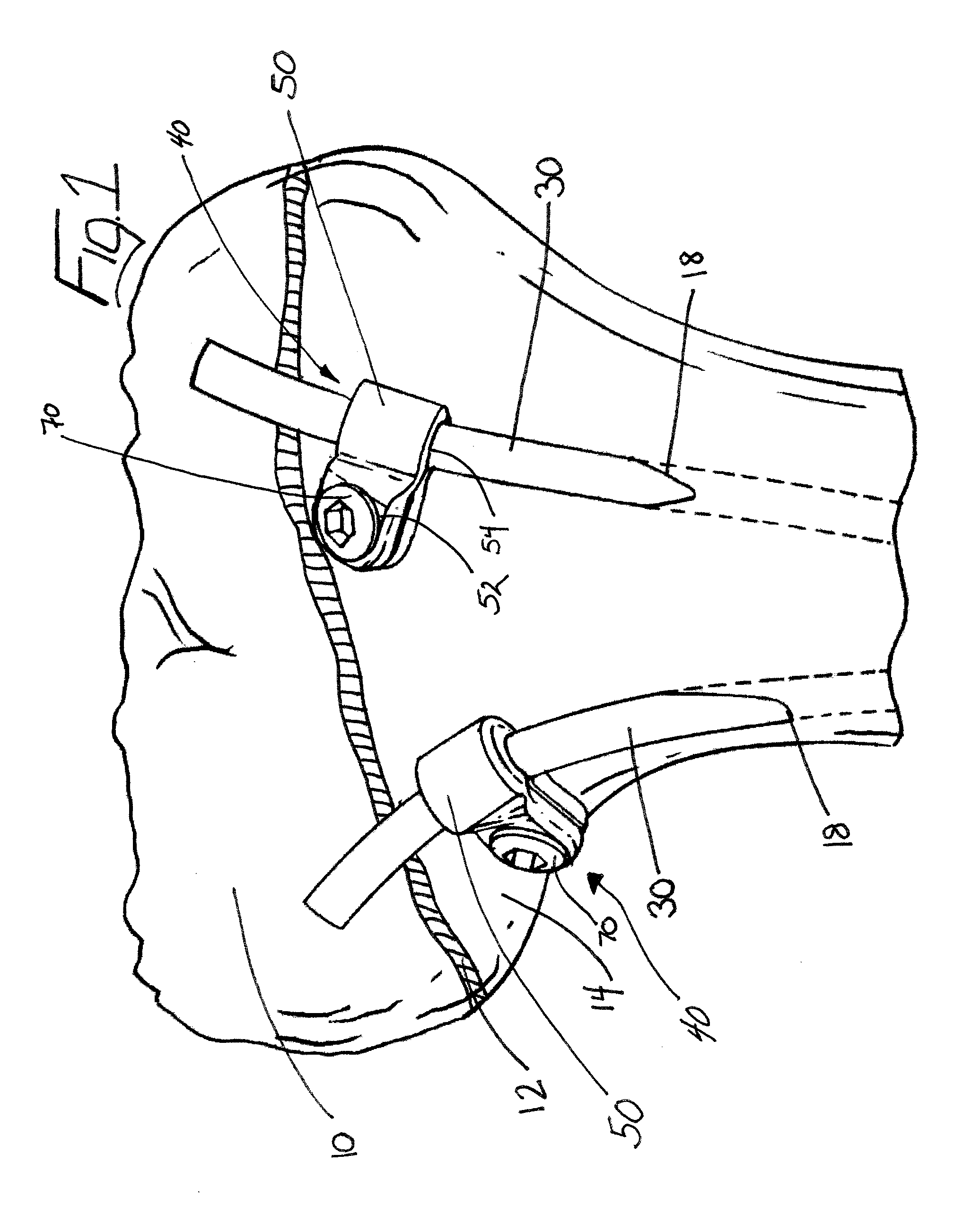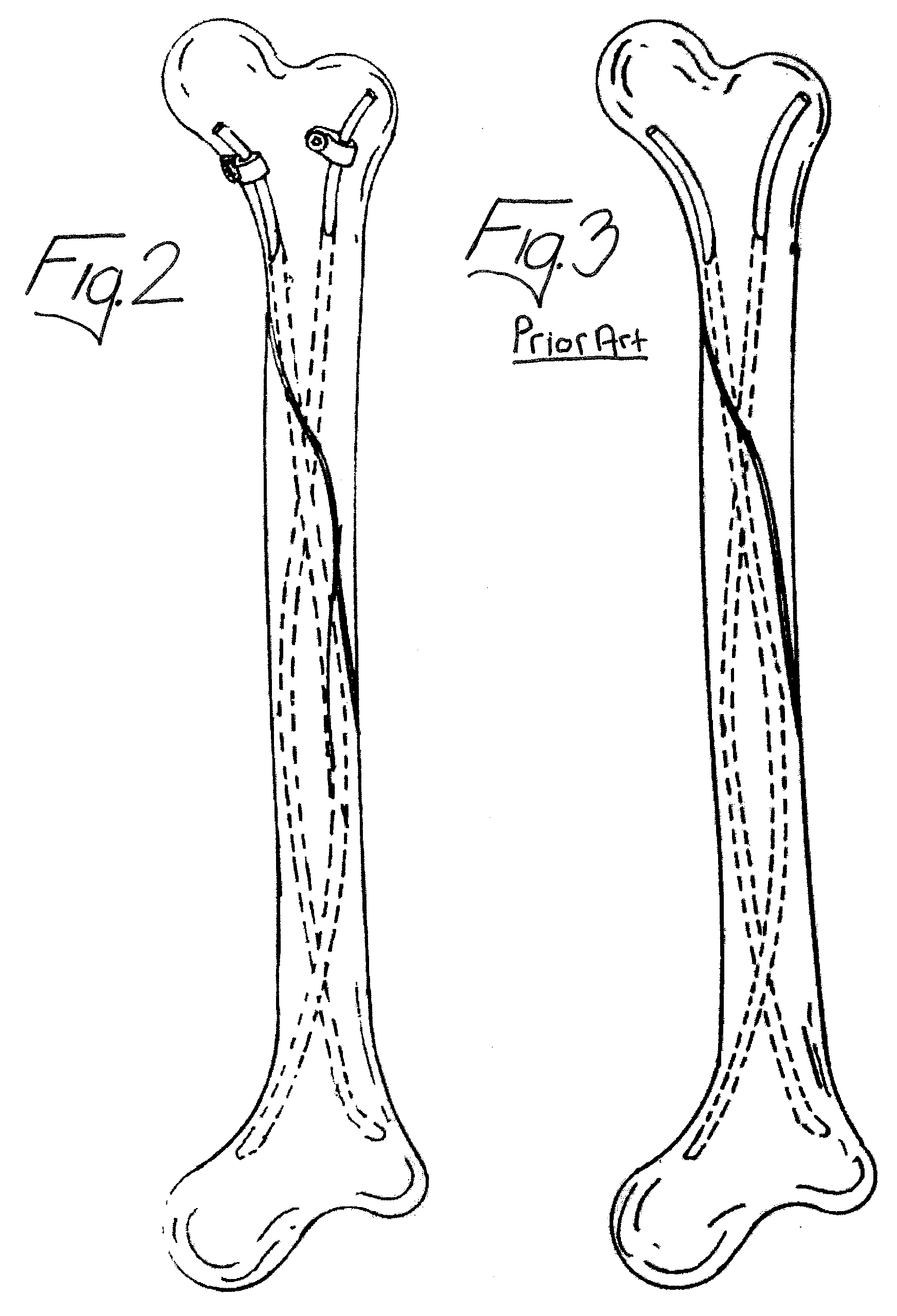Clamp For A Medical Implant And A Method For Using The Same
a technology for medical implants and clamps, which is applied in the field of clamps, can solve the problems of deformation of the bone, inability to use children and young adults, growth disturbances or growth arrest of the growth plates, etc., and achieve the effect of reducing the movement of the end
- Summary
- Abstract
- Description
- Claims
- Application Information
AI Technical Summary
Benefits of technology
Problems solved by technology
Method used
Image
Examples
Embodiment Construction
[0036]In reference to FIG. 1, one embodiment of the present invention for reducing movement of an end of an intramedullary rod 30 protruding from an insertion site 18 in a bone 10 is shown. The device 40 includes at least one clamp 50 for securing the intramedullary rod 30 protruding from the insertion site 18 in the bone 10. The securing device 40 further includes a bone anchor 70 for securing the clamp 50 to the bone 10 at a location away from the insertion site 18. Preferably the bone anchor 70 comprises a bone screw 70; however it should be understood that many different types of bone anchors may be used to secure the clamp 50 to the bone 10.
[0037]The clamp 50 comprises at least two openings 52, 54. The first opening 54 is for receiving the protruding end 32 of the intramedullary rod 30. The second opening 52 is for receiving the bone screw 70. As the bone screw 70 is inserted through the second opening 52 and into the bone 10, the bone screw 70 secures the clamp 50 relative to ...
PUM
 Login to View More
Login to View More Abstract
Description
Claims
Application Information
 Login to View More
Login to View More - R&D Engineer
- R&D Manager
- IP Professional
- Industry Leading Data Capabilities
- Powerful AI technology
- Patent DNA Extraction
Browse by: Latest US Patents, China's latest patents, Technical Efficacy Thesaurus, Application Domain, Technology Topic, Popular Technical Reports.
© 2024 PatSnap. All rights reserved.Legal|Privacy policy|Modern Slavery Act Transparency Statement|Sitemap|About US| Contact US: help@patsnap.com










